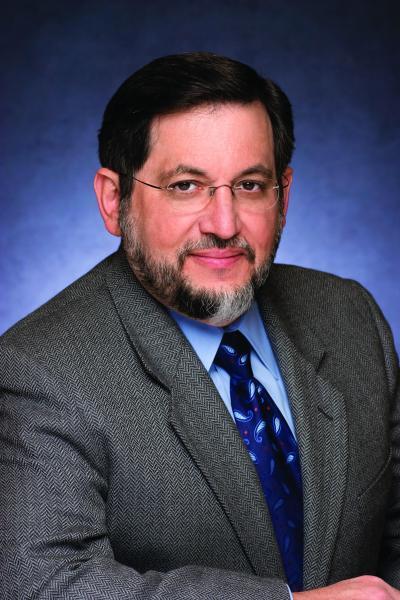PHILADELPHIA—Half-matched bone marrow or stem cell transplants for blood cancer patients have typically been associated with disappointing clinical outcomes. However, a clinical trial conducted at the Kimmel Cancer Center at Jefferson testing its unique, two-step half-match procedure has produced some promising results: the probability of overall survival was 45 percent in all patients after three years and 75 percent in patients who were in remission at the time of the transplant.
Reporting in the journal Blood in a published-ahead-of-print article dated August 25, Neal Flomenberg, M.D., Chair of the Department of Medical Oncology at Thomas Jefferson University Hospital, Dolores Grosso, DNP, Co-Principal Investigator and lead author of the article, and colleagues discuss the results of 27 patients treated on this phase I/II trial who had diagnoses that included leukemia, lymphoma and myelodysplasia.
The patients received their transplant in two steps. First, after receiving radiation therapy to further treat their disease, the patients were given a specified dose of T cells (a type of immune cell that fights infection) from their half-matched family donor. The donors were parents, siblings or children of the patient. The patients next received the drug cyclophosphamide to help the newly infused donor T cells to be more tolerant to the patient's body. The second step of the transplant occurred when the patients received a dose of their donors' stem cells to help their blood counts return to normal and further strengthen their new immune system.

Neal Flomenberg, M.D., Chair of the Department of Medical Oncology at Thomas Jefferson University Hospital.
(Photo Credit: TJUH)
Dr. Flomenberg and his team found that after a follow-up of 28-56 months, overall survival for the patients after one year was 54 percent and 48 percent at three years. Patients in remission at the time of the transplant fared better with an overall survival of 75 percent. Seventeen of the 27 patients—with a median age of 52 years old—were alive six months after their transplant, which was the official end point of the trial.
While more recent studies have shown promising increases in overall survival for patients undergoing half-match transplants, historically, clinical outcomes for these types of transplants have been poor, which has limited the use of this type of procedure.
The results of the Jefferson trial represent a very promising improvement in this area.
Bone marrow or stem cell transplants are performed in order to replace a patient's diseased immune system with that of a healthy donor. Traditionally, the use of a genetically fully matched donor has been associated with the best results in bone marrow transplant, but many patients lack a fully-matched related or unrelated donor. Almost every patient will have a half-matched donor (also known as a haploidentical donor) in their family, however.
The successful use of haploidentical donors would greatly expand the number of donors available to a patient, extending this therapy to almost everyone who would benefit from receiving a transplant. This would include minority patients, including patients with sickle cell anemia, who do not have as many fully-matched unrelated donors available to them.
"Our half-match bone marrow transplant results open up many doors for different types of patients who can't find an exact match," said Dr. Flomenberg. "It also justifies recommending that patients at high risk for relapse should consider having a half-match transplant early in the treatment of their disease."
"Jefferson's two-step procedure provides promising results that could serve as the basis for further exploration and optimization of the technique," he added.
Jefferson medical oncologists' approach is unique in that the dosage, timing and treatment of donor T cells was carefully controlled and optimized. No other transplant regimen controls the exact amount of donor T cells given. The investigators believe that dosing the T cells in this way helped avoid many of the life-threatening side effects of this type of transplant.
"We believe the dosage and timing of T cells from the donor into the patient is essential for success. In fact, it's equally as important as prescribing specific doses of radiation and chemotherapy to initially treat the disease," said Dr. Grosso. "The goal of this two-step regimen was to develop a better technique for half-matched patients with relapsed blood cancers initially, but we also showed that it can be appropriate for high risk patients earlier in their disease who lacked fully matched donor options."

New Half-Match Bone Marrow Transplant Procedure at Jefferson Yields Promising Outcomes for Cancer Patients.
(Photo Credit: TJUH)
Source: Thomas Jefferson University